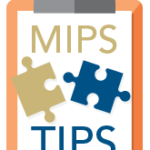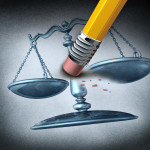In this post, guest blogger Dr. Jason Shey shares his experience as an on-call physician using an EHR in the cloud. Dr. Shey is a nephrologist/internist at Diablo Nephrology Medical Group in Concord, CA—a practice with 10 nephrologists providing services in the California Bay Area.
After about 9 months of using Acumen nEHR for dialysis note documentation, I was on call one quiet Friday night. At 2 a.m. my pager went off. It was a call from an emergency room 20 miles away. The ER physician wasn’t sure what to do with a dialysis patient. The patient didn’t speak English and the ER physician didn’t speak Spanish. The name did not sound familiar to me. The patient was not a frequent flyer; he wasn’t terribly sick. He tried to communicate that he had been seen and treated by a physician at the dialysis center earlier but the ER physician wasn’t sure what was needed to properly triage the patient.
In my half-asleep state, what I already know about this patient was not helpful to anyone. I didn’t think I could be of much help to the ER physician.
Then I thought, I could check the EHR. So I walked over to the computer, fired it up and I began searching the name.
Sure enough, there was a dialysis note entry, done just 6 hours prior at about 9 p.m. by another physician in the group. Patient has a fistula, presented to the dialysis unit with fever but no other signs or symptoms of infection. He dialyzed without difficulty, was cultured and received IV antibiotics as a precautionary measure. He was thought to have a viral syndrome but was treated just to be sure. He was instructed to go to the emergency room if he did not feel better. So the patient did what he was told and presented to the emergency room where he was stable and afebrile.
He was reassured and discharged.
This will not be the first time or the last time I receive phone calls like these. When we cross-cover on call, anything could happen. There are many patients who can call. It seems every year we add about 150-200 new names per doctor. Although we manage a sick cohort, the number can be staggering after a few years. Phone calls can get busy after hours especially in larger groups or when the weather changes.
In the last 24 hours I have prescribed antibiotics for a liver transplant patient, ordered urine cultures and changed medications for a patient with high calcium without seeing these patients. Previously, phone calls to other docs in my group (in offices I never set foot in) may have been required to make the appropriate decision. Not to mention calls to labs and pharmacies.
None of these instances qualify for attestation of ‘meaningful use.’ But this is how electronic medical records in the cloud can greatly assist physicians in their practice of medicine.
One other word about EHRs. Spend some time in the environment before you go-live. Log in, try to do a few things and ‘get to know your test patients.’ Fill out a superbill, add a few ICD-9 codes to the problem list and send a few messages. As doctors, paper charting is second nature. It’s a skill we’ve perfected over countless years of practice. We are now asked to document with a new ‘pen and paper.’ You wouldn’t want to conduct a clinic trying this new method without some practice.
Get to know your EHR because the time and phone calls you save are yours, and that’s meaningful.



Leave a Reply